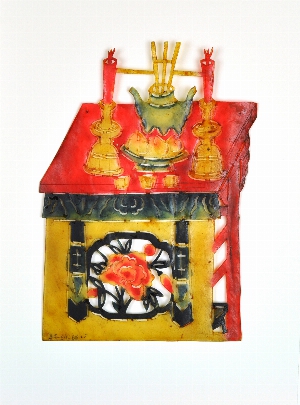Flowers
The Penn Museum has many examples of florals in its collection. In the literal sense, archaeobotanical samples collected at archaeological sites around the globe give us clues about the environments in which past societies lived and how humans interacted with plant life throughout history. In the figurative sense, depictions of flowers adorn the surfaces of material culture in our collection from all regions of the world, and in some cases, the object itself takes on the form of a flower. Floral imagery on cultural material reveals the importance that flowering plants have played in our daily lives, including their use as medicinal sources, food sources, natural dyes, pleasant aromas, and for which they are most commonly known: creating romantic gestures.
While your flowers may not yet be in bloom, take a moment to peek into our garden and you will find that flowers grow everywhere throughout our collections. From objects that decorate the spaces we inhabit—architecture, pottery, table ware, and wall hangings—to the items we use to decorate our own bodies—clothing, jewelry, bags, and shoes—flowers can be found blooming across painted surfaces, woven into textiles, and molded into bouquets. They symbolize rebirth and renewal, as well as remind us both of the fragility and beauty of life. Below is a sampling of floral imagery in our collection; we invite you to view how flowers have colored the lives of people throughout history, and afterward, to take the time to think about how flowers are incorporated into your own life—whether they are for relaxing, healing, smelling, eating, romancing, coloring, decorating, or any other way that we as humans have thought to use them.


